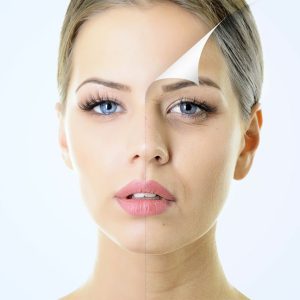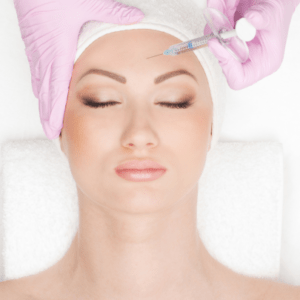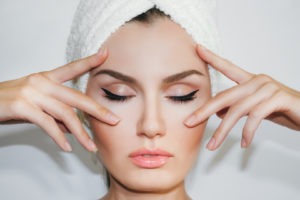 Are you struggling with an uneven skin tone and looking for a solution that can help improve your complexion? Microneedling might just be the answer you’ve been searching for. This innovative skincare treatment has been gaining popularity in recent years for its ability to address a variety of skin concerns, including uneven skin tone. In this blog post, we will explore how microneedling works to even out your complexion and what you can expect from this treatment. Motykie Med Spa, led by board certified plastic surgeon Dr. Gary Motykie, provides microneedling to patients in Beverly Hills, West Hollywood, Los Angeles, and surrounding communities.
Are you struggling with an uneven skin tone and looking for a solution that can help improve your complexion? Microneedling might just be the answer you’ve been searching for. This innovative skincare treatment has been gaining popularity in recent years for its ability to address a variety of skin concerns, including uneven skin tone. In this blog post, we will explore how microneedling works to even out your complexion and what you can expect from this treatment. Motykie Med Spa, led by board certified plastic surgeon Dr. Gary Motykie, provides microneedling to patients in Beverly Hills, West Hollywood, Los Angeles, and surrounding communities.
Understanding Microneedling and Its Popularity
Microneedling has surged in acclaim as a sought-after cosmetic intervention, distinguished for its minimal invasiveness yet potent efficacy in revitalizing the skin. This procedure employs a specialized device outfitted with fine needles, which meticulously puncture the skin’s surface to instigate a cascade of healing processes. Such micro-injuries are deliberate and controlled, sparking off the body’s innate reparative mechanisms that lead to an uptick in collagen and elastin production. Collagen and elastin are the scaffolding of the dermis, providing structure, resilience, and a plump, youthful texture to the complexion.
The broad spectrum of skin issues that microneedling can ameliorate adds to its appeal among individuals seeking cosmetic enhancements. From mitigating the visibility of acne scars and wrinkles to addressing concerns like fine lines and areas of hyperpigmentation, microneedling offers a versatile solution without the downtime associated with more intensive procedures. This versatility has positioned microneedling as a go-to option for those desiring improvements in skin texture and tone, without resorting to the rigors of chemical peels or the intensity of laser treatments.
As awareness and appreciation of microneedling’s benefits have grown, so has its adoption by both skincare professionals and those they serve. The treatment is celebrated not only for its effectiveness in confronting an array of dermatological concerns but also for its role in promoting a holistic and natural approach to skin rejuvenation. By leveraging the body’s own healing capabilities, microneedling provides a path to enhanced skin health that is both innovative and grounded in the body’s natural physiology.
How Microneedling Addresses Uneven Skin Tone
Microneedling is particularly effective in treating uneven skin tone, a common concern for many seeking a more uniform complexion. The procedure targets this issue through the generation of micro-injuries that prompt the skin’s repair mechanisms into action. This process is instrumental in the redistribution and breakdown of melanin clusters that contribute to hyperpigmentation. As the skin undergoes its natural healing cycle, stimulated by the microneedling treatment, there’s a gradual dispersal of pigmented cells, leading to a reduction in the appearance of dark spots and areas of discoloration.
Beyond directly addressing pigmentation irregularities, the treatment enhances overall skin texture and luminosity. The boost in collagen and elastin production, triggered by the micro-injuries, works to smooth and refine the skin’s surface. This not only helps in diminishing the visibility of scars and fine lines but also plays a crucial role in creating a more even-toned and radiant complexion.
The versatility of microneedling means it can be tailored to address various degrees of skin tone unevenness, from subtle variations in complexion to more pronounced hyperpigmentation issues. By fostering a healthier skin environment, where new cells replace damaged or discolored ones, microneedling paves the way for a more balanced and harmonious skin tone. It’s this strategic approach to skin rejuvenation that makes microneedling a preferred option for those aiming to achieve a clearer, more evenly toned complexion without the need for more aggressive treatment modalities.
The Ideal Candidates for Microneedling
Microneedling serves a broad audience, offering benefits to individuals with various skin types and concerns. Primarily, it attracts those eager to enhance their skin’s overall aesthetics, mitigate issues such as hyperpigmentation or acne scars, and preserve a youthful radiance. This treatment is particularly suited for individuals who have tried conventional skincare routines but seek more pronounced improvements in skin texture, tone, and appearance.
Not everyone, however, is a perfect match for microneedling. A thorough evaluation by a skincare professional is crucial, as they can assess your skin’s condition, discuss your cosmetic goals, and determine if microneedling aligns with your needs. For instance, those with certain active skin conditions—like ongoing acne outbreaks, eczema flare-ups, or active rosacea—might be advised to consider alternative treatments. The goal is to ensure not only the effectiveness of the microneedling procedure but also the safety and health of the client’s skin.
Pre-existing medical conditions, current skin health, and the individual’s overall health profile are other factors that a professional might consider when determining candidacy for microneedling. Those on certain medications that affect skin sensitivity or healing might also need to discuss potential risks or adjust treatment plans accordingly.
Engaging in a conversation with a skincare professional about your skin’s history, your health background, and your aesthetic aspirations can provide clarity. This dialogue ensures that microneedling is not only a viable option but also a tailored approach to achieving your desired skincare outcomes, making it a collaborative journey towards enhanced skin health and beauty.
Preparing for Your Microneedling Session
To set the stage for a successful microneedling experience, taking the right preparatory steps is essential. In advance of your session, your skin care professional will outline specific guidelines tailored to your skin’s needs. These may involve pausing the use of retinoids, exfoliants, or any other products that could heighten skin sensitivity, thereby reducing potential risks during the procedure.
Emphasizing overall skin health can also play a pivotal role in how your skin responds to microneedling. Staying well-hydrated, maintaining a balanced diet rich in vitamins and antioxidants, and ensuring your skin is well-protected against UV rays can fortify your skin’s resilience. These practices not only prep your skin for the forthcoming treatment but also contribute to a more favorable healing environment post-session.
Additionally, it’s advisable to keep your skin clean and free of makeup on the day of your treatment. This helps in minimizing any chances of irritation and allows the microneedling device to work more efficiently. Your provider might also recommend a brief cessation of certain medications or supplements that could interfere with your body’s natural healing processes. Always communicate openly about your current medication regimen during your pre-treatment consultation.
Following these preparatory steps diligently will not only ease the microneedling process but also enhance your overall treatment outcome. Your commitment to these guidelines ensures you’re fully primed for your microneedling session, setting a strong foundation for achieving the smoother, more radiant complexion you desire.
What to Expect During and After Treatment
When you undergo a microneedling session, a numbing cream is typically applied to your skin to mitigate any discomfort during the procedure. The microneedling device, equipped with tiny needles, is then used to create micro-injuries across the treated area. While the sensation might be uncomfortable for some, the numbing cream significantly reduces any potential pain, making the process manageable for most patients.
Immediately following the procedure, it’s normal to notice that your skin appears redder and may feel slightly swollen or tender, akin to a mild sunburn. These reactions are a natural part of the healing process and generally diminish within a few days post-treatment.
In the recovery phase, adhering to specific aftercare instructions from your skincare provider is crucial. This could include applying certain gentle, hydrating products to assist in the healing process and steering clear of direct sunlight to prevent any further skin irritation. Additionally, keeping your skin moisturized and avoiding harsh skincare treatments or products will support the healing process, allowing you to achieve the best possible results from your microneedling treatment.
Your skincare professional might also advise on how to adjust your skincare routine temporarily to cater to your skin’s heightened sensitivity after microneedling. Following these guidelines diligently will help ensure your skin heals properly and fully benefits from the rejuvenating effects of the microneedling procedure.
Microneedling at Home vs. Professional Treatment
The realm of microneedling offers two distinct paths: the do-it-yourself approach with home kits and the specialized care found in professional settings. While the convenience and accessibility of home devices may appeal to many, it’s essential to recognize the limitations and potential risks they present. These tools, although designed for consumer use, often lack the precision and depth control that professional-grade devices offer. Consequently, the outcomes from at-home sessions tend to be less dramatic and can vary greatly in terms of safety and effectiveness.
On the other hand, seeking microneedling from a trained professional not only maximizes the treatment’s benefits but also ensures a higher standard of safety. Professionals utilize advanced devices that can accurately target deeper layers of the skin, promoting more substantial improvements in skin texture, tone, and overall appearance. Additionally, these experts can tailor the procedure to individual skin types and concerns, further enhancing the results.
Moreover, a professional setting provides a structured plan for aftercare, crucial for the healing process and the longevity of the treatment’s effects. In contrast, at-home treatments leave room for error, potentially leading to complications or unsatisfactory results. For those serious about achieving and maintaining a healthier, more even complexion, professional microneedling stands as the clear choice.
For More Information on Non-Surgical & Anti-Aging Treatments Contact Motykie Med Spa
Click here for Virtual Consultation
Click Here to Schedule an In Office Appointment
To see more services and treatments provided by Board Certified Plastic Surgeon, Dr. Motykie in Beverly Hills | Los Angeles | West Hollywood, CA | Chicago | Barrington, IL and his team please visit:




 Are you looking for a non-surgical solution to tighten your skin and achieve a more youthful appearance? Look no further than Morpheus8, a revolutionary skin tightening technique that is taking Beverly Hills by storm. This innovative procedure combines microneedling with radiofrequency technology to stimulate collagen production and tighten the skin. If you’re curious about Morpheus8 and how it can benefit you, keep reading to learn more. Motykie Med Spa, led by board certified plastic surgeon
Are you looking for a non-surgical solution to tighten your skin and achieve a more youthful appearance? Look no further than Morpheus8, a revolutionary skin tightening technique that is taking Beverly Hills by storm. This innovative procedure combines microneedling with radiofrequency technology to stimulate collagen production and tighten the skin. If you’re curious about Morpheus8 and how it can benefit you, keep reading to learn more. Motykie Med Spa, led by board certified plastic surgeon  Are you considering getting Botox for the first time? Whether you want to smooth out wrinkles or prevent new ones from forming,
Are you considering getting Botox for the first time? Whether you want to smooth out wrinkles or prevent new ones from forming,  When it comes to maintaining radiant and youthful skin, one of the most potent weapons in your beauty arsenal could be a chemical peel. However, the question that perplexes many is – how often should you get a chemical peel? In this article, we aim to clear the fog surrounding this intriguing query. Motykie Med Spa led by board certified plastic surgeon
When it comes to maintaining radiant and youthful skin, one of the most potent weapons in your beauty arsenal could be a chemical peel. However, the question that perplexes many is – how often should you get a chemical peel? In this article, we aim to clear the fog surrounding this intriguing query. Motykie Med Spa led by board certified plastic surgeon
 When it comes to achieving a more youthful and refreshed appearance, many people turn to cosmetic treatments such as Botox and fillers. These popular options are known for their ability to reduce the appearance of wrinkles and enhance facial features. However, with so many options available, it can be overwhelming to determine which treatment is right for you. In this guide, we will break down the differences between Botox and fillers and help you find the perfect cosmetic treatment to achieve your desired goals. Motykie Med Spa led by board certified plastic surgeon
When it comes to achieving a more youthful and refreshed appearance, many people turn to cosmetic treatments such as Botox and fillers. These popular options are known for their ability to reduce the appearance of wrinkles and enhance facial features. However, with so many options available, it can be overwhelming to determine which treatment is right for you. In this guide, we will break down the differences between Botox and fillers and help you find the perfect cosmetic treatment to achieve your desired goals. Motykie Med Spa led by board certified plastic surgeon As the holiday season approaches, many of us are looking for ways to improve our appearance and feel confident for all the festive gatherings and events. While surgical procedures may seem like the only option, there are actually plenty of
As the holiday season approaches, many of us are looking for ways to improve our appearance and feel confident for all the festive gatherings and events. While surgical procedures may seem like the only option, there are actually plenty of 



